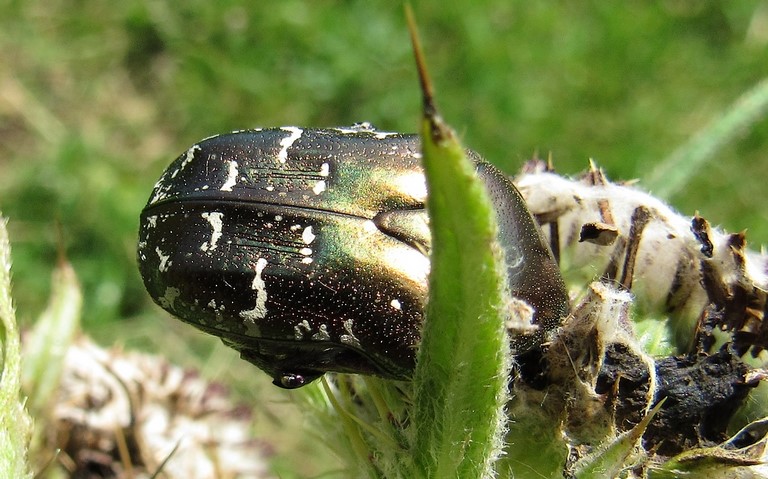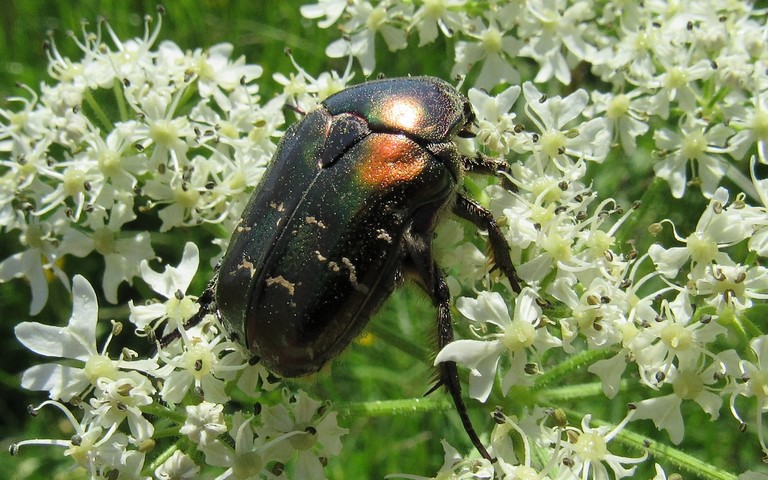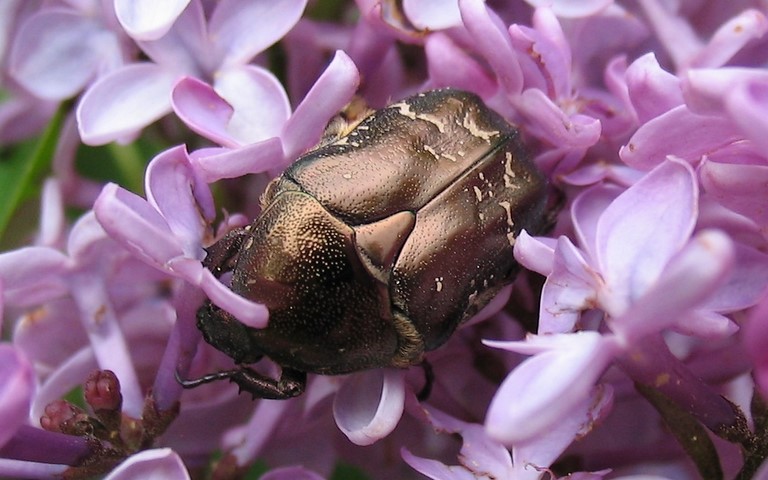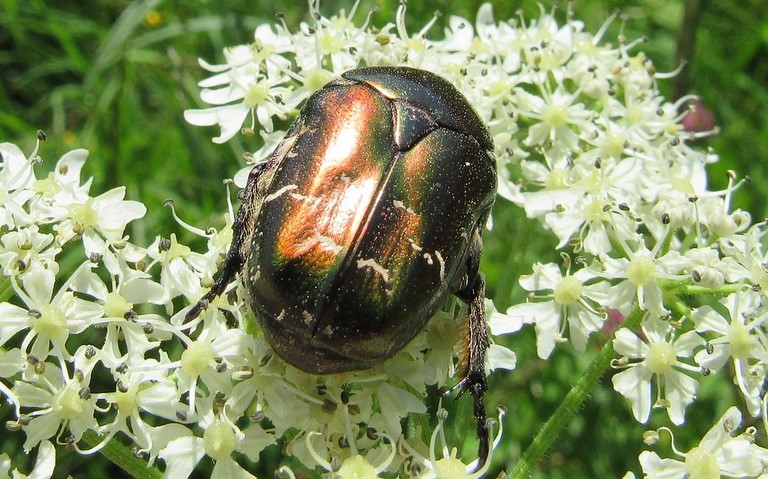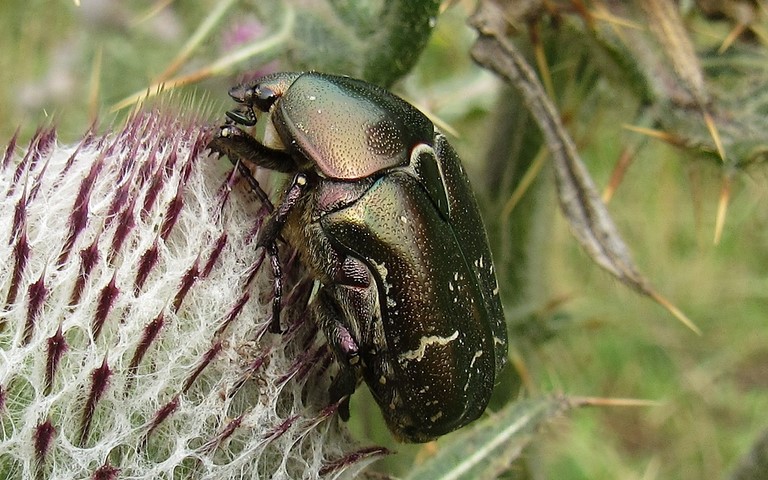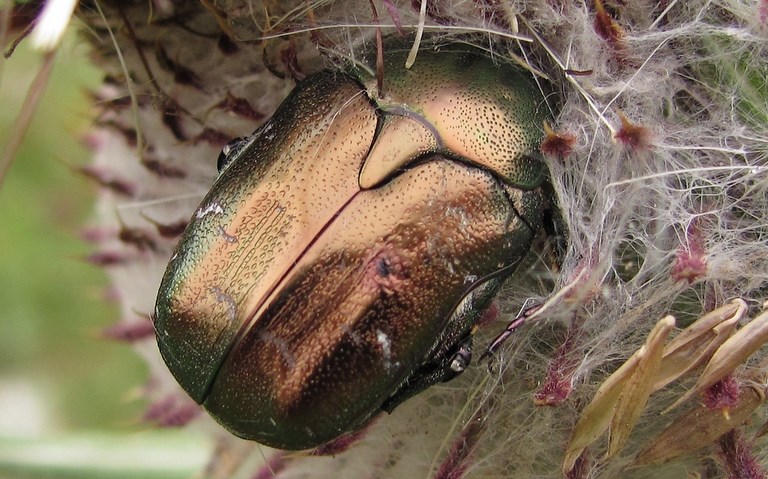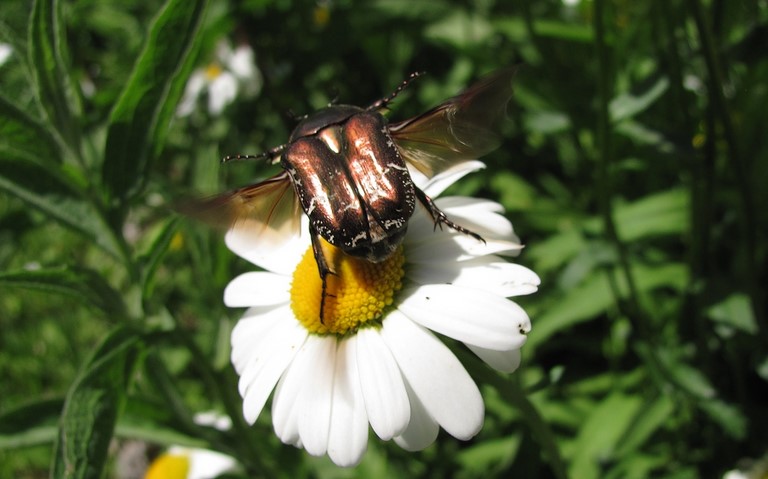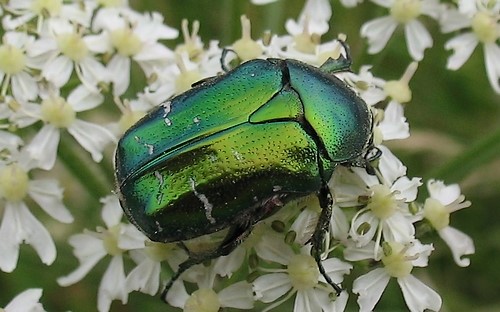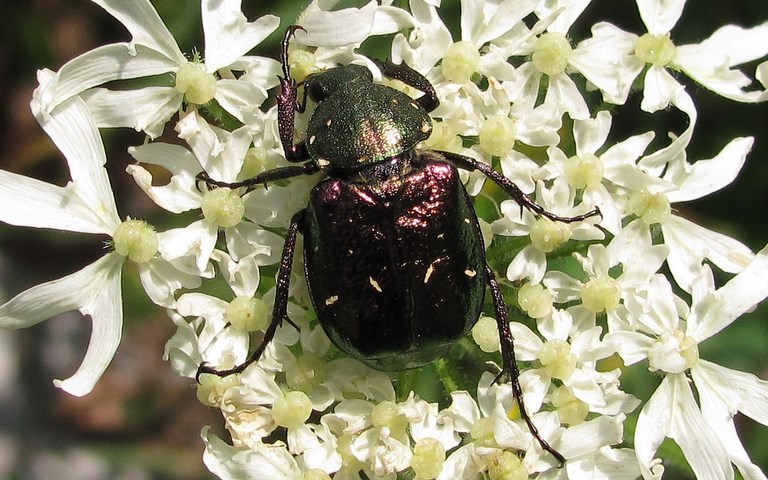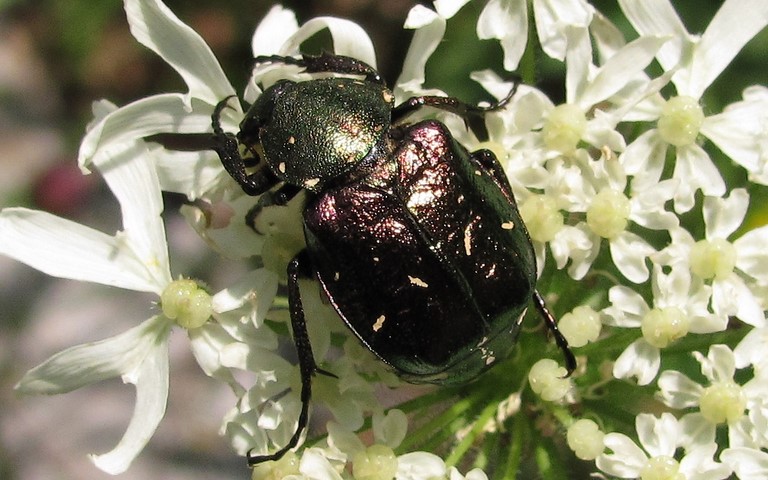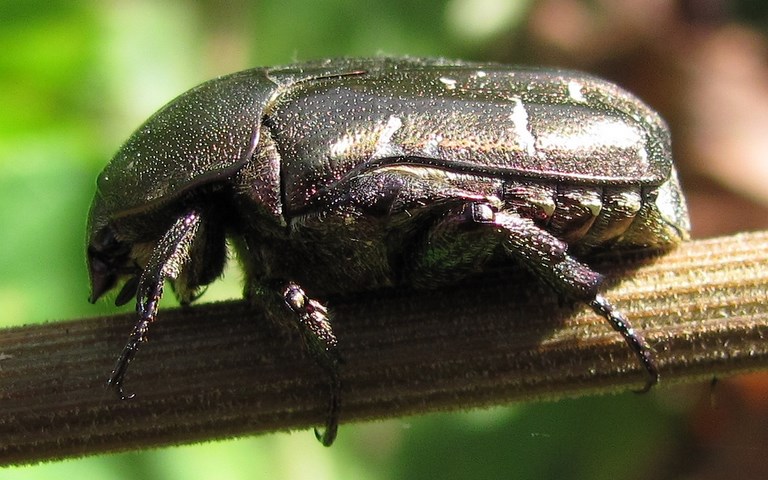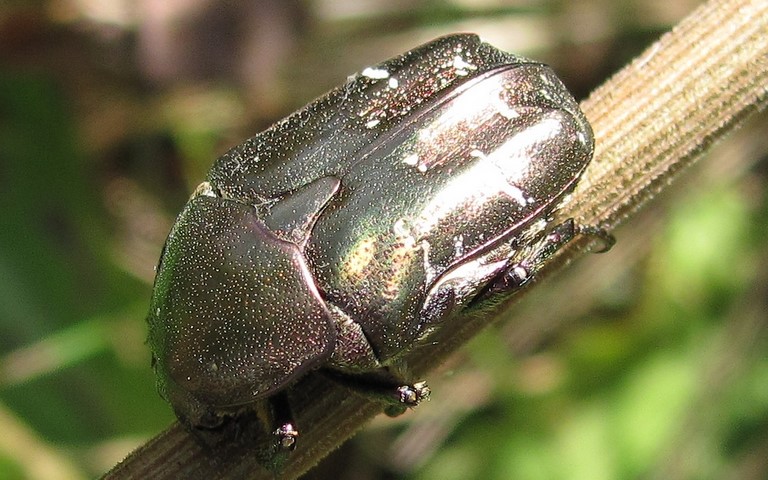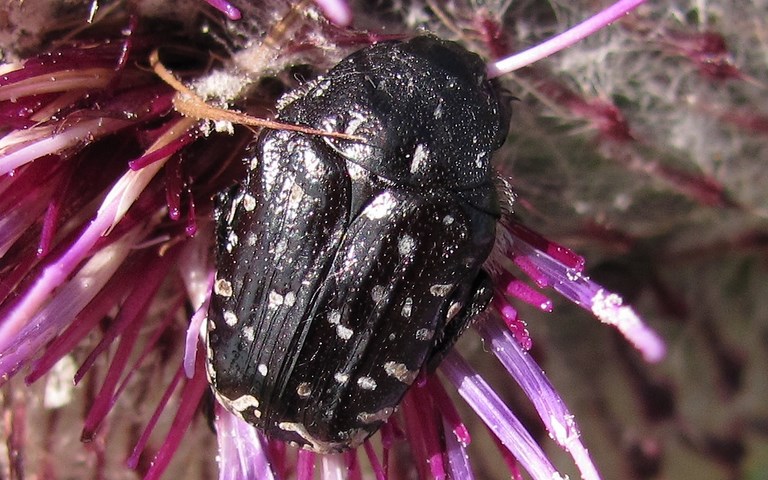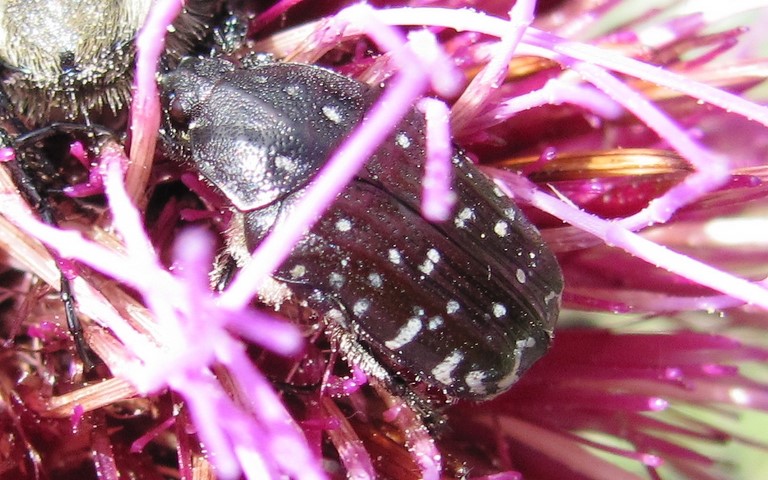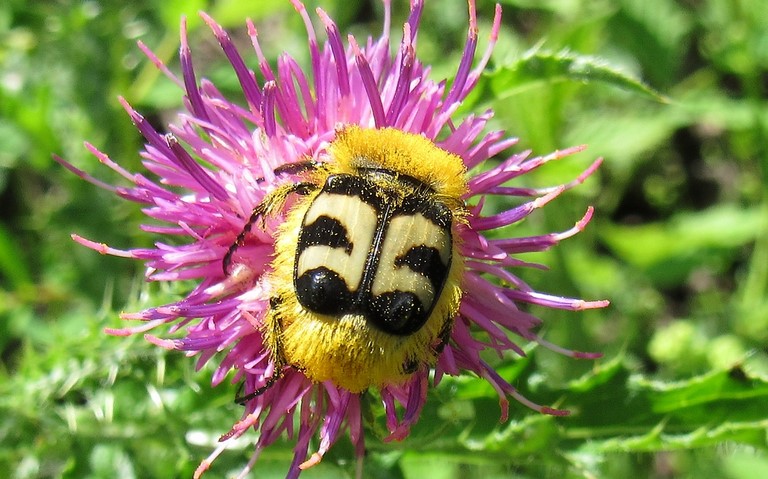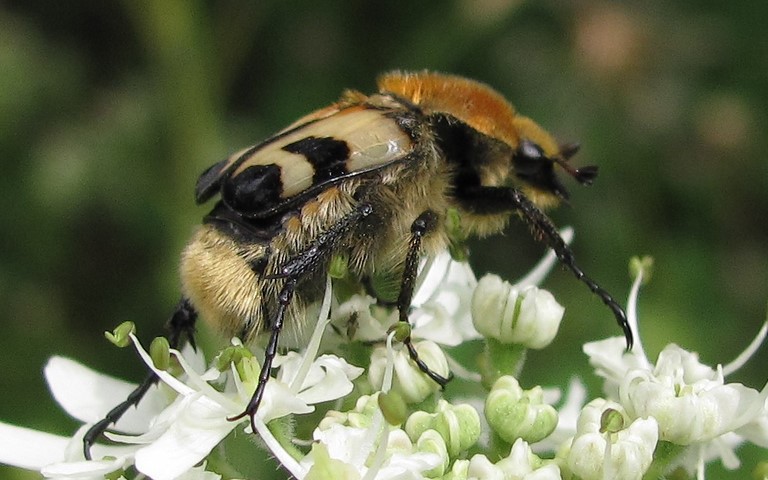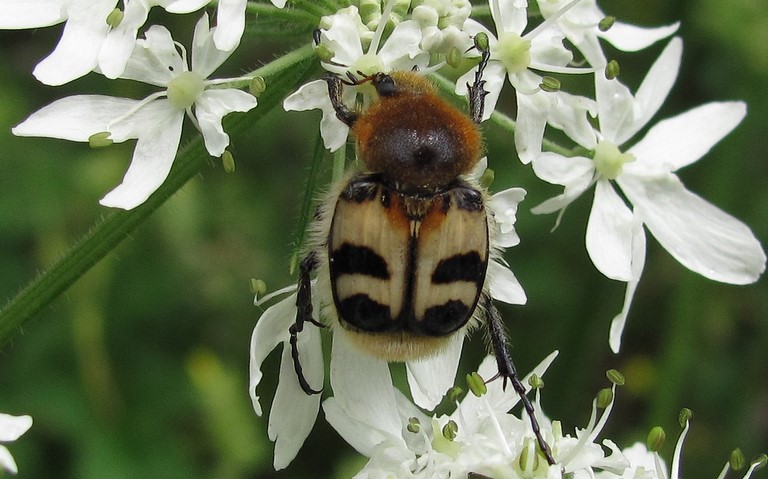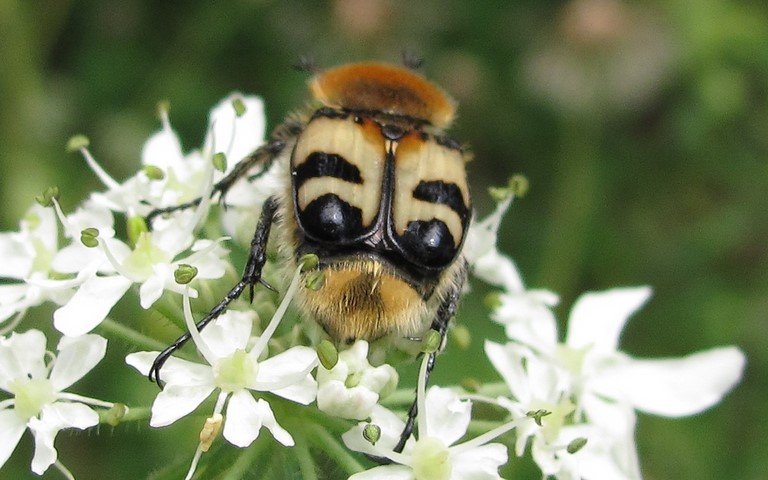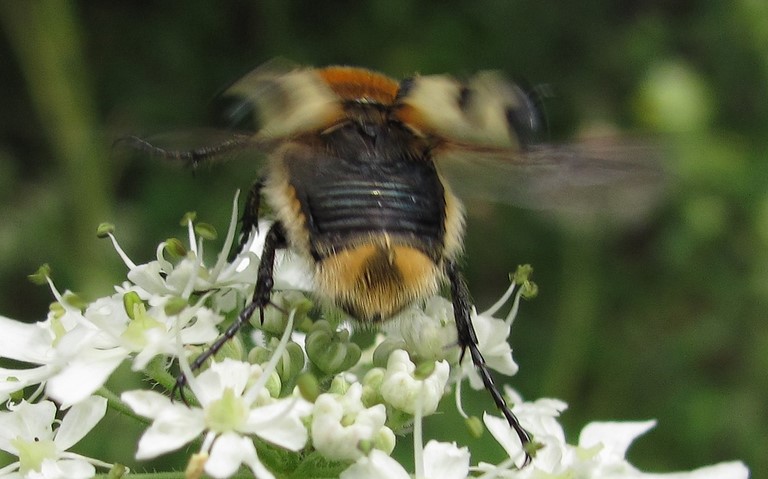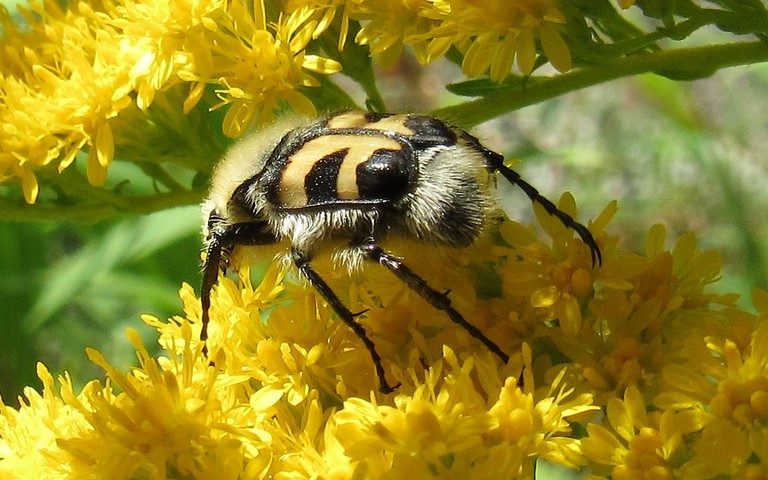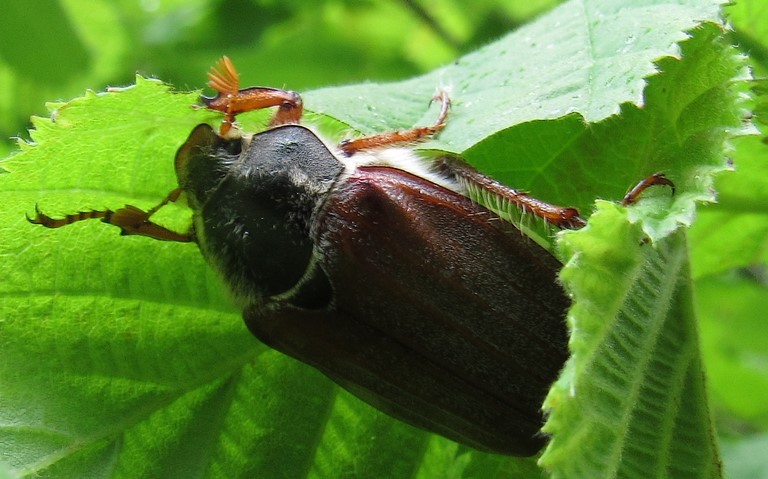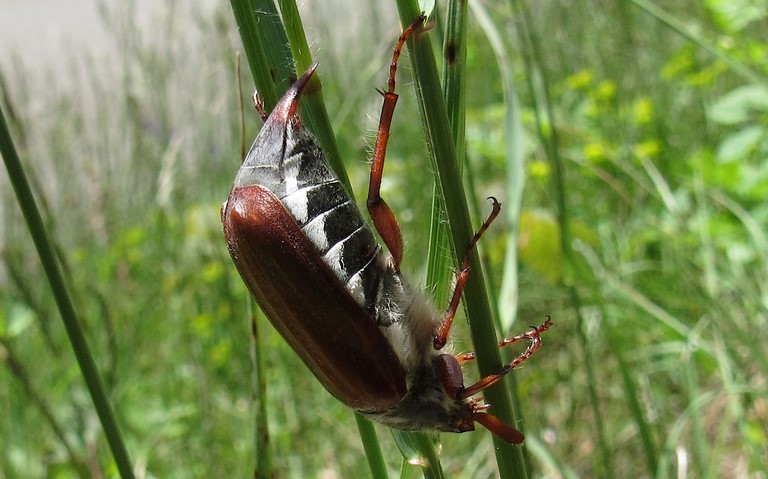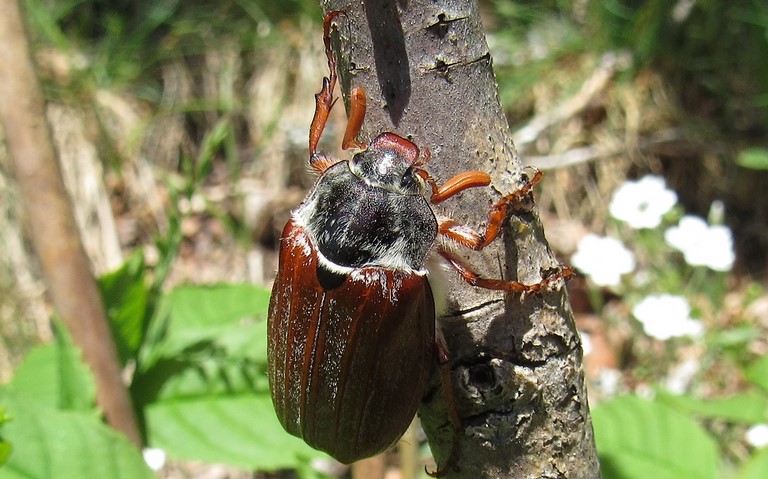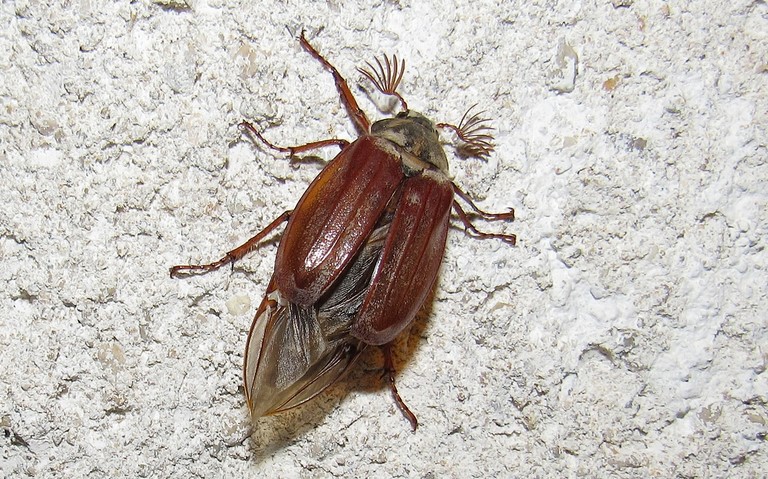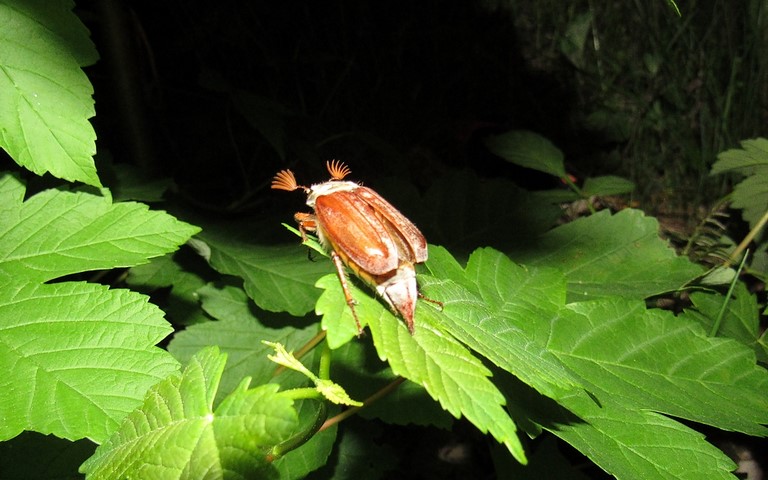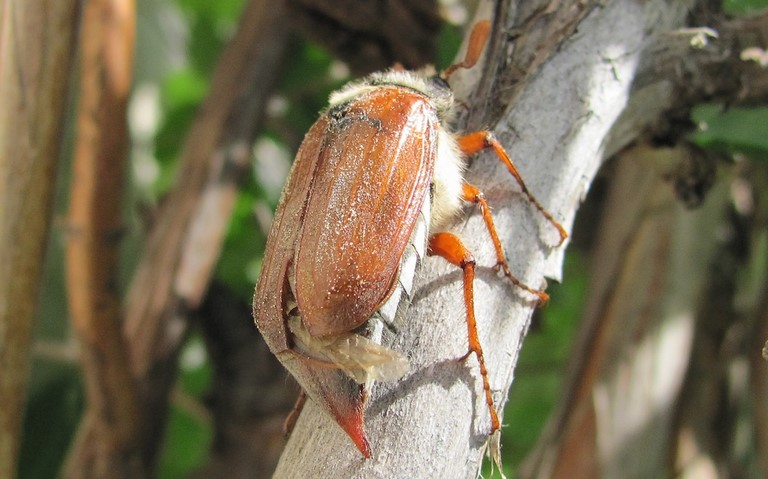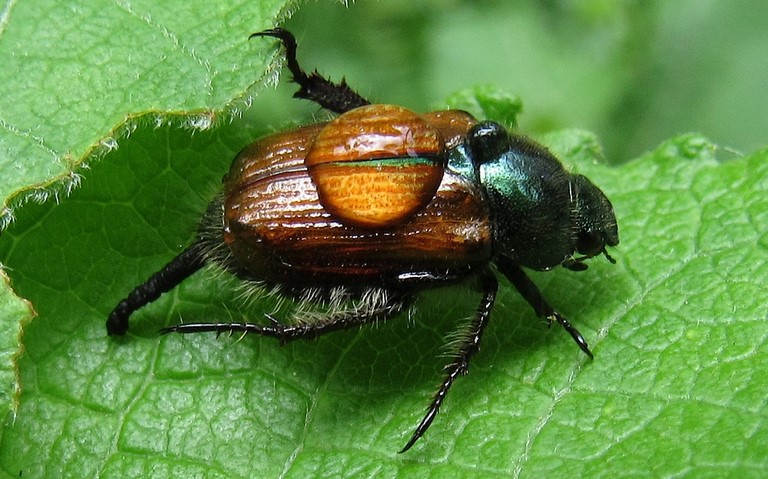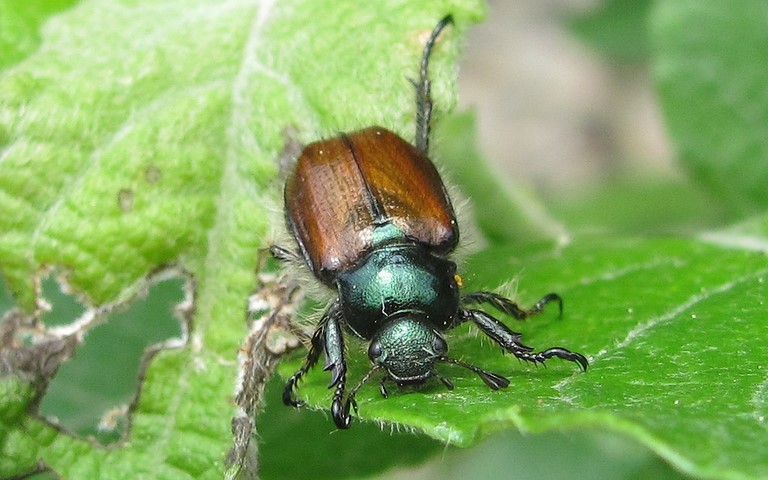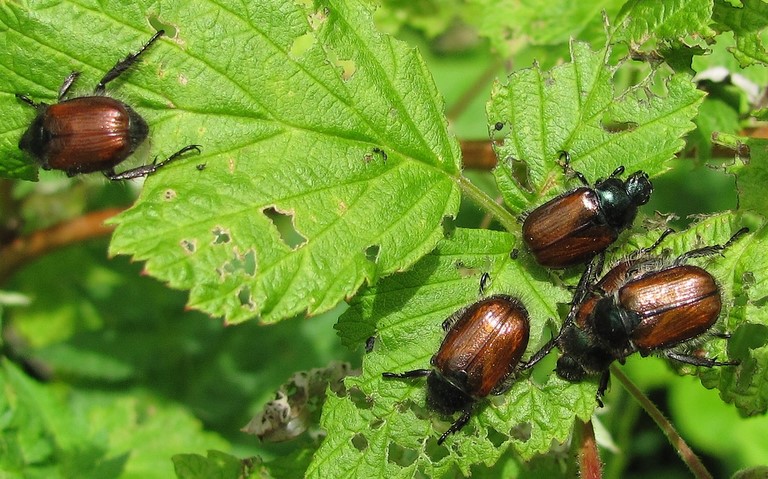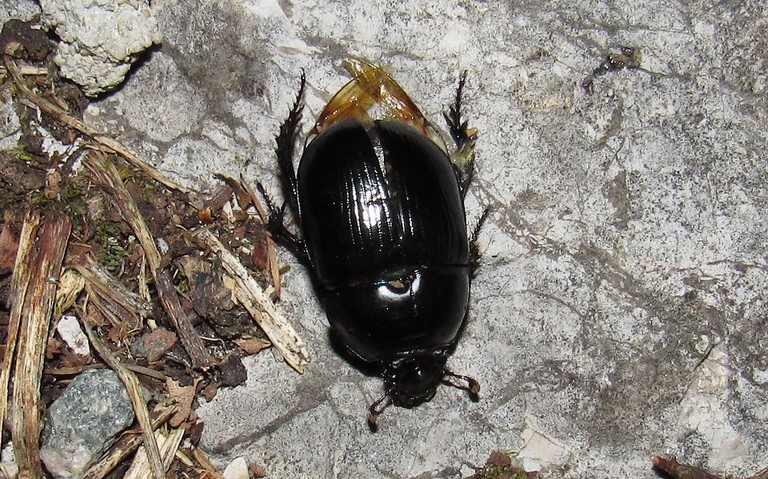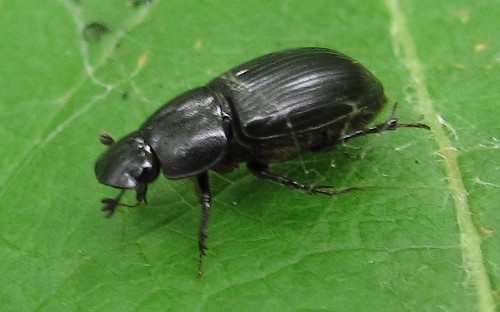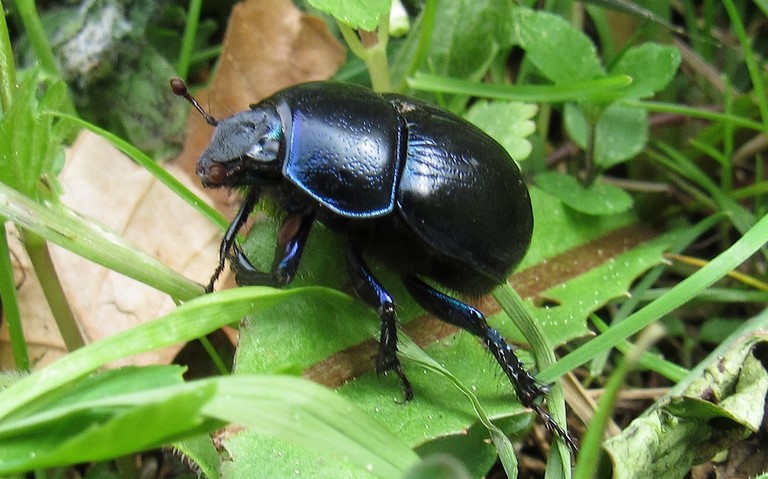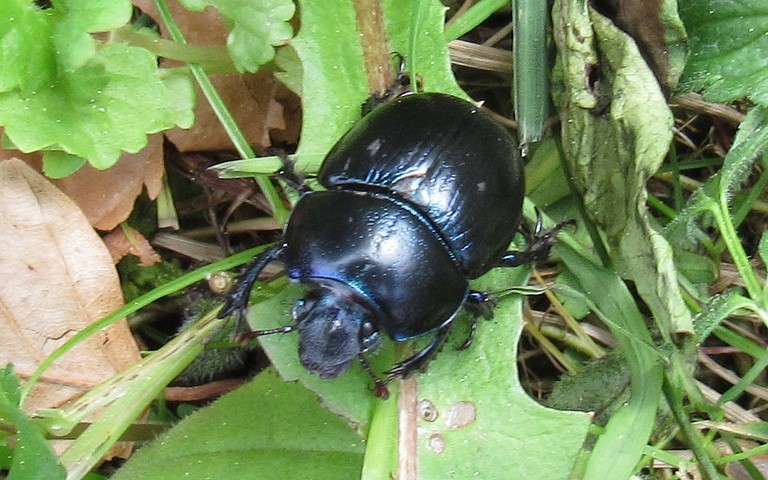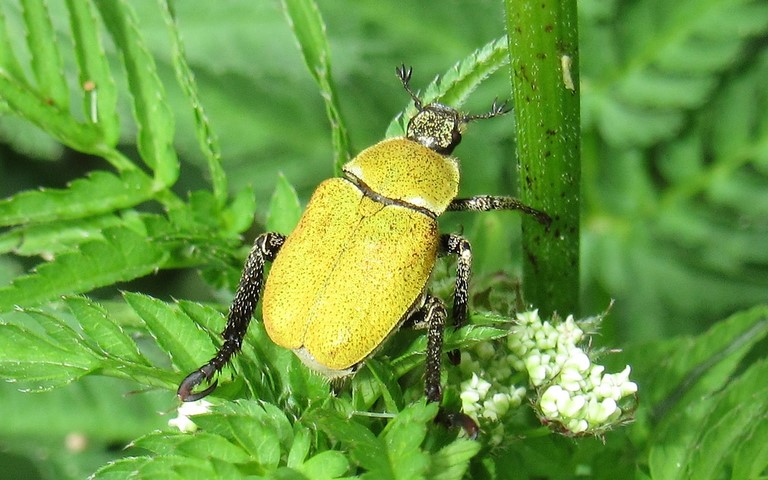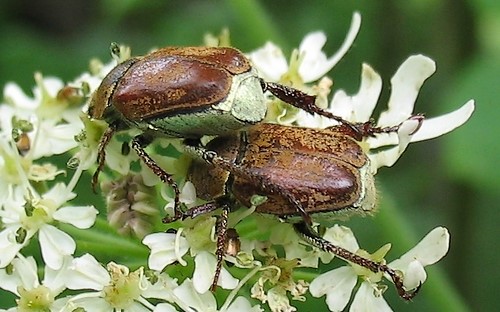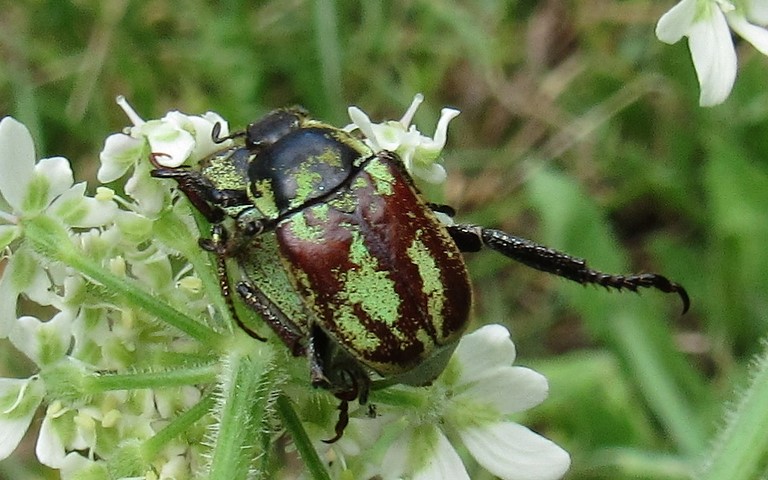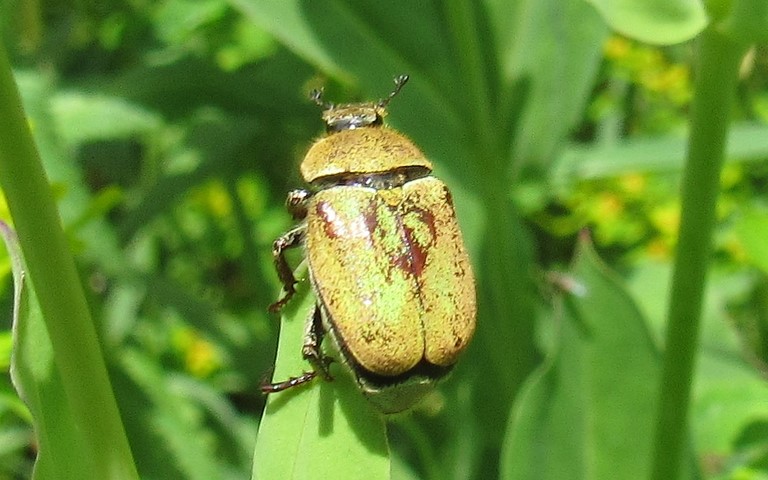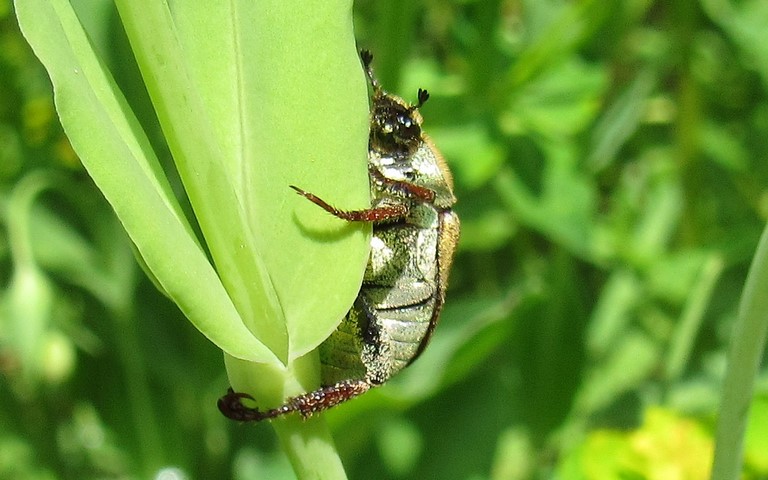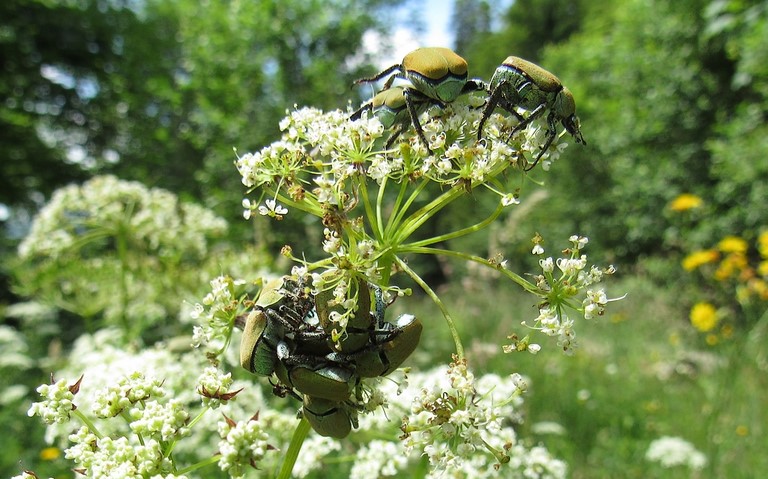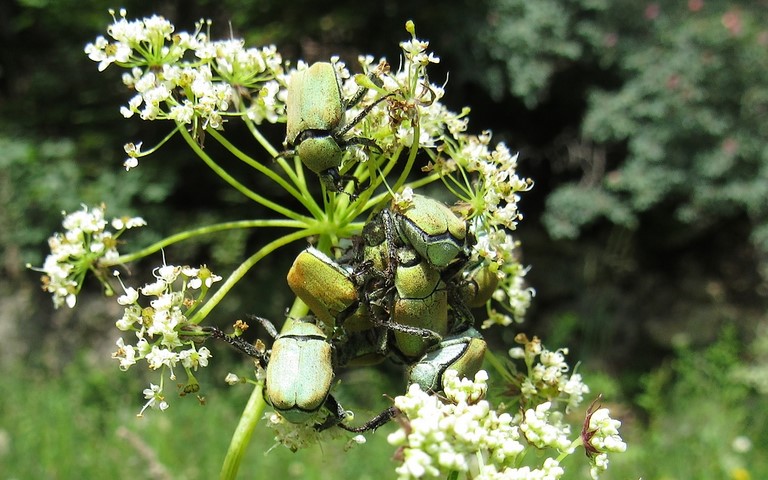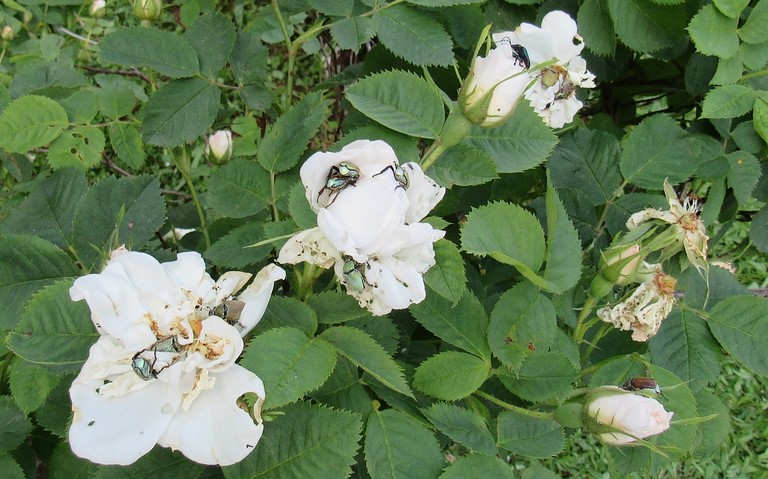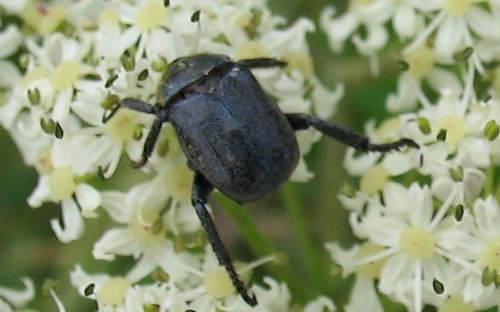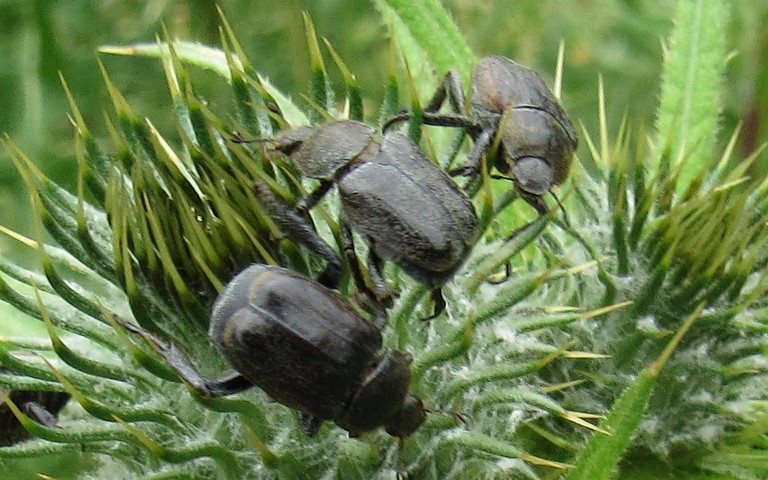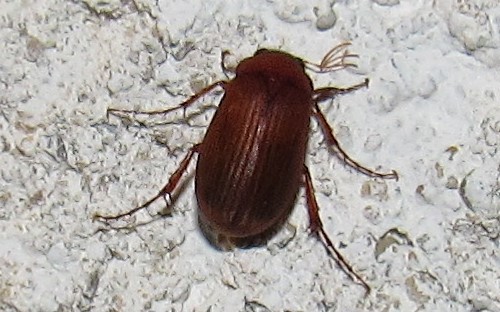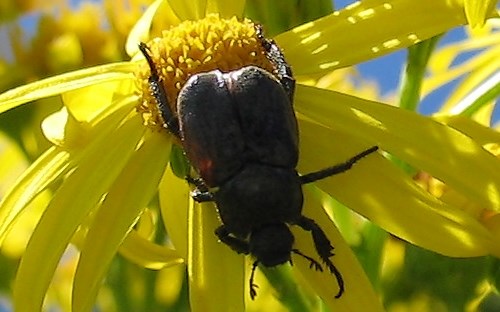COLÉOPTÈRES
SCARABAEIDEA
Différents des carabes, les Scarabeidés, sont des insectes au corps plutôt massif, de longueur très variable (entre 6 et 150 mm pour certaines espèces tropicales). Petite tête, pattes courtes et antennes lamellées se terminant en éventail. Deux groupes bien distincts dans cette famille. Les bousiers, principalement coprophages (excréments) aux couleurs assez ternes et les scarabées, phytophages et xylophages assez colorés. Le hanneton, bien connu dans nos régions, est un scarabée.
Sur cette page :
- Cétoine cuivrée - Cetonia cuprea- Cétoine dorée - Cetonia aurata
- Protaecia sp.
- Drap mortuaire - Oxythyrea funesta
- Gnorimus noble - Gnorimus nobilis
- Trichie fasciée - Trichius fasciatus
- Hanneton commun - Melolontha melolontha
- Hanneton des jardins - Phyllopertha horticola
- Bousiers
- Hoplie argentée - Hoplia argentea
- Hoplia philanthus
- Serica brunnea
LA CÉTOINE CUIVRÉE - Cetonia cuprea
- LA CÉTOINE DORÉE - Cetonia aurata
- LE GNORIMUS NOBLE - Gnorimus nobilis
Protaecia sp.
LE DRAP MORTUAIRE - Oxythyrea funesta
LA TRICHIE FASCIÉE - Trichius fasciatus
LE HANNETON COMMUN - Melolontha melolontha
- Ces coléoptères actifs la nuit apparaissent tous les ans au printemps mais, tous les 3 - 4 ans ils sont beaucoup plus nombreux. On dit alors que ce sont des "années à hannetons".
- Ces coléoptères actifs la nuit apparaissent tous les ans au printemps mais, tous les 3 - 4 ans ils sont beaucoup plus nombreux. On dit alors que ce sont des "années à hannetons".
LE HANNETON DES JARDINS - Phyllopertha horticola
LES BOUSIERS
- Très difficile de distinguer les diverses espèces de bousiers...
L'HOPLIE ARGENTÉE - Hoplia argentea
- Nombreuses variations de couleur. Souvent en nombre sur les ombellifères ou les rosiers...
Hoplia philanthus
Serica brunnea
Inconnu

